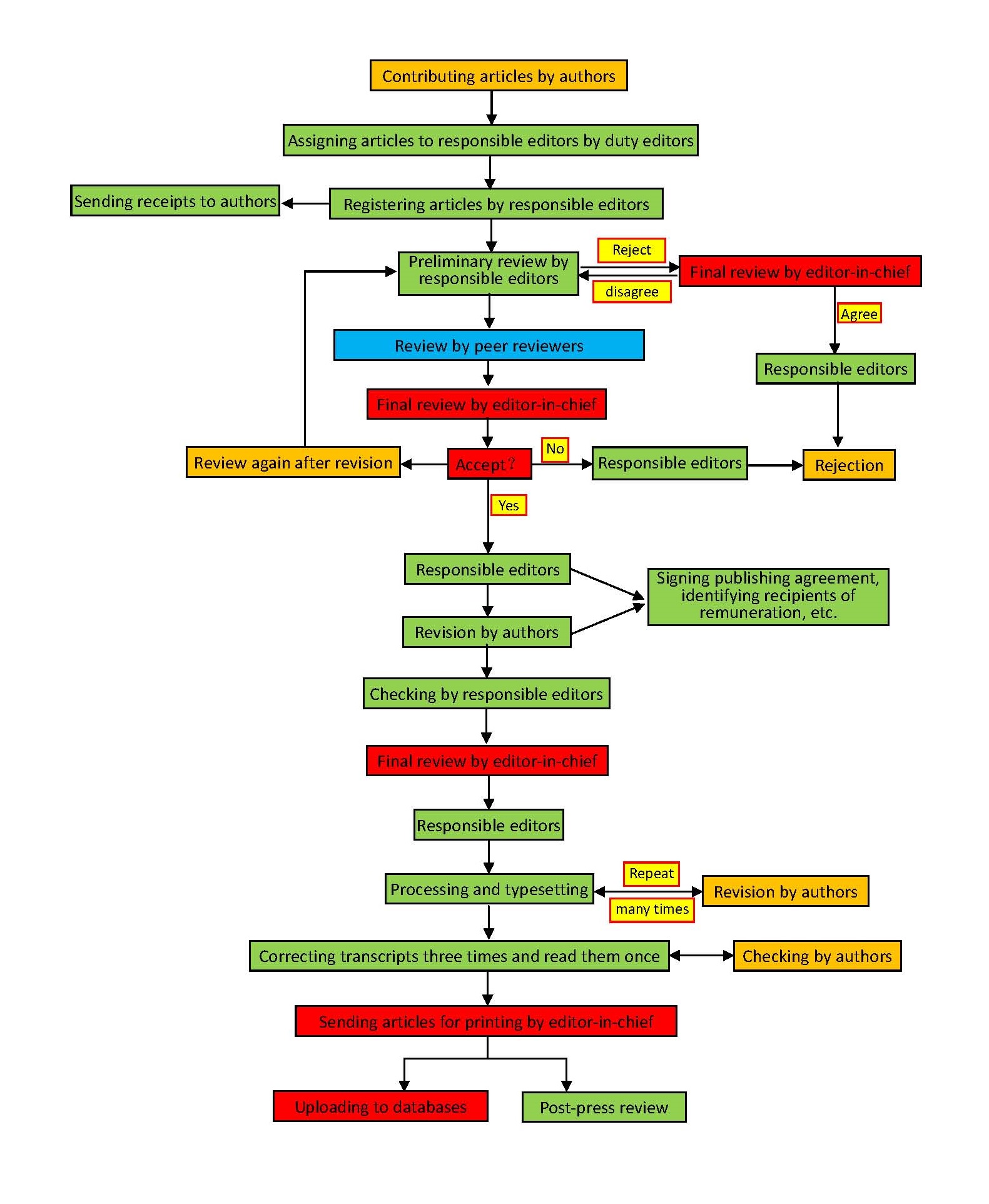










1. Review Process
All manuscripts should go throughan initial review by the editors, an external peer review, and a final review by the (Deputy) Editor-in-Chief. After a manuscript is successfully submitted, the editors shall conduct an initial assessment. Manuscripts lacking originality, containing significant scientific or technical flaws, or falling outside the journal’s scope will be rejected. Manuscripts that pass the initial review undergo peer review and are sent to external reviewers (at least 2 reviewers for one manuscript, double-blind mode). The reviewers’ decisions (acceptance/rejection/revision) will be communicated to the first/corresponding author. The authors must respond to each review comment and submit a revised version of the manuscript. This process will be repeated until the reviewers and editors are satisfied with the manuscript. The Editor-in-Chief or the Deputy Editor-in-Chief shall take the final review and make the final decision on the acceptance of manuscripts
2. Internal Submission
Submissions by Editorial Board Members/editors must adhere to the journal's review and editorial procedures. Peer review must be conducted independently from the involved individuals and their research groups. They cannot participate in reviews of manuscripts whose authors they have conflicts of interest with.
3. Correction and Retraction
After publishing, if there appears to be an unintended scientific mistake in the article which would not lead to significant impacts on the results and conclusion, the editorial office will publish corrections in the journal as soon as possible, detailing the changes made to the original article. If severe scientific errors are found in published articles, or the article is suspected of academic misconduct, such as plagiarism and data falsification, the editorial office will issue a statement to inform readers of the risks, initiate an investigation and announce the final result, or even retract article with a retraction statement if necessary.
4. Special Issue
The above manuscript review process also applies to submissions for special issues. If applicable, manuscripts submitted to special issues undergo the same review and editing process as regular issue manuscripts, and the Editor-in-Chief or the Deputy Editor-in-Chief will decide whether the manuscript will be accepted for publication. The Editor-in-Chief is responsible for the entire content of the journal, including special issues. When organizing a special issue, the editorial office will invite authoritative experts in the field to serve as the Guest Editors for the special issue. The responsibilities of the Guest Editors include proposing the theme of the special issue, soliciting manuscripts, organizing peer reviews, and resolving any issues that arise during the publication of the special issue. The work of the Guest Editors is supervised by the Editor-in-Chief and the editorial office to ensure the fairness of the manuscript review process.